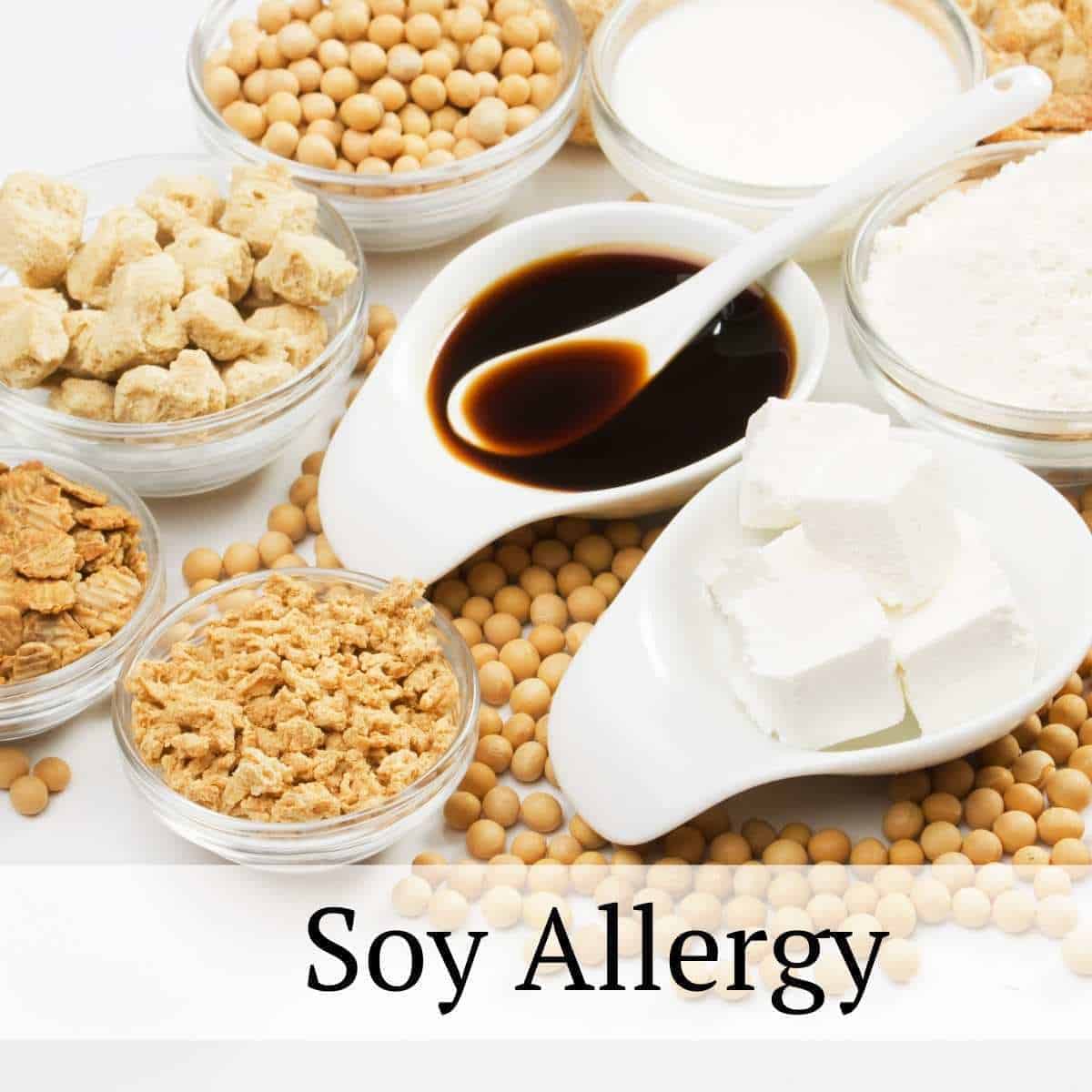Embark on a culinary journey free from soy allergens! This comprehensive guide unveils a world of delicious and adaptable recipes, perfect for every occasion. From vibrant breakfast delights to sophisticated dinner masterpieces, we’ll explore the art of soy-free cooking, providing essential tips, substitutions, and detailed instructions to create mouthwatering dishes that are both healthy and satisfying. Discover the secrets to successful soy-free baking and learn how to confidently navigate the world of allergen-free dining.
Imagine a table laden with golden-brown, soy-free pancakes, their edges crisp and interiors fluffy. Picture hearty, flavorful stews bursting with vibrant vegetables and aromatic spices, all meticulously crafted without a trace of soy. Envision delectable cakes, their textures light and airy, their flavors bold and satisfying – all achievable without compromising taste or enjoyment. This book provides the knowledge and recipes to make these culinary dreams a reality.
Breakfast & Brunch Soy-Free Delights
Soy-free breakfasts and brunches offer a delicious and versatile range of options for those with soy allergies or sensitivities. These recipes prioritize fresh, flavorful ingredients and simple preparation techniques to ensure both deliciousness and safety. Careful attention to avoiding cross-contamination is paramount, as even trace amounts of soy can trigger reactions. The following recipes offer guidance on achieving both delicious and safe soy-free meals.
Fluffy Coconut Pancakes
These pancakes are light, fluffy, and naturally sweetened with a hint of coconut. The absence of soy allows the delicate coconut flavor to shine through. Their golden-brown hue and soft texture make them visually appealing and incredibly satisfying.
- Ingredients: 1 ½ cups coconut flour, 2 tsp baking powder, ½ tsp baking soda, ¼ tsp salt, 1 tbsp coconut oil (melted), 2 large eggs, 1 cup unsweetened coconut milk, ½ cup water, 1 tbsp maple syrup (optional).
- Step 1: In a large bowl, whisk together coconut flour, baking powder, baking soda, and salt. Ensure all dry ingredients are thoroughly combined to prevent lumps in the finished pancakes.
- Step 2: In a separate bowl, whisk together melted coconut oil, eggs, coconut milk, water, and maple syrup (if using). This ensures even distribution of wet ingredients and prevents clumping.
- Step 3: Gently pour the wet ingredients into the dry ingredients and whisk until just combined. Overmixing can lead to tough pancakes. The batter should be slightly lumpy.
- Step 4: Heat a lightly oiled griddle or frying pan over medium heat. Using a ¼ cup measure, pour batter onto the hot surface, forming small circles. This ensures even cooking and consistent pancake size.
- Step 5: Cook for 2-3 minutes per side, or until golden brown and cooked through. Flip carefully using a spatula. The cooked pancakes will be light and fluffy with a slightly crispy exterior.
- Cross-Contamination Prevention: Use separate utensils and bowls for wet and dry ingredients. Ensure all cooking surfaces and utensils are thoroughly cleaned before preparation to avoid any potential soy residue.
Savory Quinoa Breakfast Bowl
This hearty bowl is packed with protein and fiber, providing a sustained energy boost throughout the morning. The vibrant colors and textures create a visually stunning and satisfying breakfast. The quinoa provides a slightly chewy texture, complementing the crisp vegetables and soft cooked eggs.
- Ingredients: ½ cup quinoa, 1 cup vegetable broth, ½ cup chopped bell peppers (various colors), ½ cup chopped spinach, 2 large eggs, 1 tbsp olive oil, salt and pepper to taste.
- Step 1: Rinse the quinoa thoroughly under cold water. This removes any excess starch and ensures proper cooking.
- Step 2: Combine rinsed quinoa and vegetable broth in a small saucepan. Bring to a boil, then reduce heat and simmer for 15 minutes, or until all liquid is absorbed. The cooked quinoa will be fluffy and slightly separated.
- Step 3: While quinoa cooks, heat olive oil in a separate pan. Sauté bell peppers and spinach until tender-crisp. This adds a visual appeal with the varied colors and textures of the vegetables.
- Step 4: In the same pan (after cleaning and drying if necessary), cook eggs to your preference (scrambled, fried, or poached). The cooked eggs will add a creamy element to the bowl.
- Step 5: Combine cooked quinoa, sautéed vegetables, and eggs in a bowl. Season with salt and pepper to taste. The finished bowl will be a vibrant mix of colors and textures.
- Cross-Contamination Prevention: Use separate pans for cooking quinoa and vegetables to avoid cross-contamination. Ensure all utensils are thoroughly cleaned before use.
Berrylicious Chia Seed Pudding
This pudding is a delightful blend of sweet berries and creamy chia seeds, providing a healthy and refreshing start to the day. The vibrant colors of the berries create a visually appealing contrast against the creamy white chia pudding. The pudding has a smooth, almost mousse-like texture.
- Ingredients: 2 tbsp chia seeds, 1 cup unsweetened almond milk, ½ cup mixed berries (fresh or frozen), 1 tbsp maple syrup (optional), a pinch of vanilla extract.
- Step 1: In a jar or bowl, combine chia seeds, almond milk, maple syrup (if using), and vanilla extract. Stir well to ensure chia seeds are evenly distributed throughout the milk.
- Step 2: Cover and refrigerate for at least 4 hours, or preferably overnight. This allows the chia seeds to absorb the liquid and create a pudding-like consistency. The pudding will thicken significantly during chilling.
- Step 3: Before serving, gently fold in mixed berries. The berries add a burst of freshness and color to the creamy pudding.
- Cross-Contamination Prevention: Ensure all utensils and containers used are thoroughly cleaned to prevent any soy contamination. Use a dedicated spoon or spatula for the chia pudding to avoid cross-contamination with other foods.
Lunch & Dinner Soy-Free Masterpieces

Soy-free cooking opens a world of culinary possibilities, allowing for vibrant flavors and textures without compromising on taste or satisfaction. These recipes showcase the versatility of soy-free cuisine, offering diverse options for both lunch and dinner, easily adaptable to various dietary needs. Each dish provides a unique flavor profile, demonstrating how to create delicious and satisfying meals without relying on soy.
Mediterranean Quinoa Salad (Lunch)
This vibrant salad is a perfect light yet fulfilling lunch option. The combination of fresh herbs, juicy vegetables, and protein-rich quinoa creates a refreshing and healthy meal. Preparation time is approximately 20 minutes.
- Cook 1 cup of quinoa according to package directions. Fluff with a fork and set aside to cool.
- Chop 1 cucumber, 1 red bell pepper, and ½ cup of Kalamata olives.
- Finely chop ½ cup of fresh parsley and ¼ cup of fresh mint.
- In a large bowl, combine the cooked quinoa, cucumber, bell pepper, olives, parsley, and mint.
- In a small bowl, whisk together 2 tablespoons of olive oil, 2 tablespoons of lemon juice, 1 teaspoon of dried oregano, salt, and pepper to taste.
- Pour the dressing over the salad and toss gently to combine.
- Serve chilled or at room temperature.
Spicy Peanut Noodles (Lunch)
A flavorful and satisfying noodle dish, this recipe is quick to prepare and packed with bold flavors. The peanut sauce is naturally soy-free and offers a rich, creamy texture. Preparation time is approximately 15 minutes.
- Cook 8 ounces of rice noodles according to package directions. Drain and rinse with cold water.
- While the noodles are cooking, prepare the peanut sauce: In a small bowl, whisk together ¼ cup of peanut butter (ensure it’s soy-free), 2 tablespoons of rice vinegar, 1 tablespoon of soy sauce alternative (tamari or coconut aminos), 1 tablespoon of sesame oil, 1 tablespoon of honey or maple syrup (for vegan option), 1 teaspoon of sriracha (or more, to taste), and 2 tablespoons of water. Adjust consistency with more water if needed.
- Add the cooked noodles to the peanut sauce and toss to coat evenly.
- Garnish with chopped peanuts, cilantro, and lime wedges.
Moroccan Tagine with Apricots and Chickpeas (Dinner)
This fragrant and flavorful tagine is a hearty and satisfying dinner option. The combination of sweet apricots, savory chickpeas, and warming spices creates a truly unique culinary experience. Preparation time is approximately 30 minutes, plus 45 minutes cooking time.
- Heat 2 tablespoons of olive oil in a large pot or Dutch oven over medium heat. Add 1 chopped onion and cook until softened, about 5 minutes.
- Add 1 teaspoon of ground cumin, 1 teaspoon of ground coriander, ½ teaspoon of turmeric, ½ teaspoon of cinnamon, and a pinch of cayenne pepper. Cook for 1 minute, stirring constantly.
- Stir in 1 can (15 ounces) of chickpeas (drained and rinsed), 1 cup of dried apricots (halved), 1 cup of vegetable broth, and 1 can (14.5 ounces) of diced tomatoes (undrained).
- Bring to a simmer, then reduce heat to low, cover, and cook for 45 minutes, or until the apricots are tender and the sauce has thickened.
- Serve hot with couscous or quinoa.
Coconut Curry with Vegetables and Tofu (Dinner)
A vibrant and flavorful vegan curry, this recipe is both healthy and delicious. The creamy coconut milk provides a rich base for the curry, while the vegetables add texture and nutrients. Preparation time is approximately 20 minutes, plus 30 minutes cooking time.
- Heat 1 tablespoon of coconut oil in a large pot or wok over medium heat. Add 1 chopped onion, 2 cloves of minced garlic, and 1 inch of grated ginger. Cook until softened, about 5 minutes.
- Add 1 red bell pepper (chopped), 1 cup of broccoli florets, 1 cup of cauliflower florets, and 1 cup of sliced carrots. Cook for 5 minutes, stirring occasionally.
- Stir in 1 tablespoon of curry powder, ½ teaspoon of turmeric, and a pinch of cayenne pepper. Cook for 1 minute, stirring constantly.
- Add 1 can (13.5 ounces) of full-fat coconut milk, 1 block (14 ounces) of extra-firm tofu (pressed and cubed), and ½ cup of vegetable broth. Bring to a simmer, then reduce heat to low, cover, and cook for 30 minutes, or until the vegetables are tender.
- Serve hot with brown rice or naan bread.
Flavor Profile Comparisons
The Mediterranean Quinoa Salad offers a bright, refreshing flavor profile with herbaceous notes and a light lemon vinaigrette. The Spicy Peanut Noodles deliver a bold, savory, and slightly spicy taste with a creamy peanut sauce. The Moroccan Tagine presents a warm, complex flavor with sweet apricots, savory chickpeas, and a blend of aromatic spices. Finally, the Coconut Curry boasts a rich, creamy, and subtly spicy flavor with a hint of sweetness from the coconut milk. These recipes showcase a wide range of culinary styles and flavor combinations, all while remaining completely soy-free.
Adapting Recipes for Dietary Needs
The provided recipes are easily adaptable to various dietary needs. The Mediterranean Quinoa Salad and Moroccan Tagine are naturally vegetarian. To make the Spicy Peanut Noodles vegan, simply ensure your peanut butter is vegan and use maple syrup instead of honey. The Coconut Curry is already vegan. For gluten-free options, ensure that all ingredients used are certified gluten-free. To increase protein content in any of the recipes, add more chickpeas, lentils, or tofu.
Mastering soy-free cooking opens doors to a world of culinary creativity and inclusivity. This guide has equipped you with the foundational knowledge, essential substitutions, and a treasure trove of delicious recipes to confidently create allergen-free meals for any occasion. From simple everyday dishes to impressive celebratory feasts, the possibilities are endless. Embrace the challenge, experiment with flavors, and savor the joy of creating delicious and safe meals for yourself and your loved ones. The journey to allergen-free dining is a rewarding one, filled with culinary discoveries and the satisfaction of knowing you’re nourishing your body with delicious, healthy, and safe food.
FAQ Section
What are some common hidden sources of soy in food?
Soy lecithin (found in many processed foods), soy protein isolate, hydrolyzed vegetable protein (often contains soy), and soy flour are common hidden sources of soy.
Can I use soy-free alternatives in all recipes without modification?
While many substitutions work well, some recipes may require adjustments to achieve the desired texture and taste. Consider the unique properties of each alternative when making substitutions.
How can I prevent cross-contamination when cooking soy-free?
Use separate cutting boards, utensils, and cooking surfaces for soy-free dishes. Thoroughly clean and wash all equipment before and after use.
Are all soy-free products automatically gluten-free?
No, soy-free does not automatically mean gluten-free. Always check ingredient labels to ensure the product is also gluten-free if needed.


